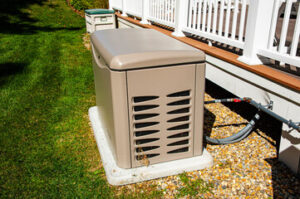Action Generator is a machine that converts mechanical power into electric power. Using principles like electromagnetic induction, it turns motion-based power into electrical energy. Mechanical sources of power include hydraulic turbines at dams and waterfalls, wind turbines, nuclear fission, fossil fuel combustion, and gasoline and diesel engines.
Early generators used direct current (DC). They did this by connecting the armature winding to the circuit via a commutator, switching every 180 degrees of shaft rotation.
A generator converts mechanical energy into electrical energy to power machines, appliances and devices. It is a rotating electrical machine that uses Michael Faraday’s principle of electromagnetic induction to create electric currents by forcing electrons through a magnetic field. The moving part of the generator, known as the rotor, rotates inside the stationary part called the stator. This interaction between the rotor and the stator produces electricity. Electrical generators may produce either alternating current or direct current.
The mechanical power for a generator comes from a variety of sources: water turbines in dams and waterfalls; wind, solar or gas turbines; combustion of fossil fuels or natural gas; nuclear fission. The mechanical power is transferred to a crankshaft, which then spins the armature. This rotation causes the coils and magnets to change their relative positions in the magnetic field, which induces an alternating electric potential, or AC voltage.
This AC voltage is regulated by a governor that limits the engine speed to keep it from exceeding a safe limit. It is also controlled by a spark advance control that maintains a constant air/fuel ratio to protect the engine from damage caused by detonation.
Another critical component of the generator is the exhaust system that carries away the fumes produced by the internal combustion engine. It is important that this system be correctly installed, as the fumes contain toxic chemicals that can cause carbon monoxide poisoning if inhaled. The exhaust pipe should terminate outdoors and be well away from doors, windows and openings into the house or building.
A generator has a frame that shields the moving parts and keeps dirt and moisture out. It also has a rotating shaft that connects to the engine motor or propellers in wind and water generators, which then spins the armature within the static magnets of a generator to produce electrical currents through copper wiring.
Generators are available in a variety of sizes and power capacities for residential, commercial, and industrial use. Some are small and portable, allowing for easy use in camping or hobbies, while others are permanent installations that can power entire homes. A qualified electrician can determine a home or business owner’s power needs and help choose the correct size generator to meet those requirements.
How Does a Generator Work?
A generator is a device that turns mechanical energy into electrical energy. The source of the mechanical energy can vary, but common examples include water, wind, solar, diesel or gas. The generator itself uses a system of engines, wires and magnetism to convert the mechanical energy into electric current.
A key component of the generator is an iron core with two sets of conductor coils. When a current passes through the coils, they create magnetic fields that induce voltage in nearby conductors. This is the basic principle of electromagnetic induction, first demonstrated by Michael Faraday in 1831.
The conductors in the coils of a generator are known as armature windings. The generator engine provides the mechanical energy to rotate the crankshaft, which in turn causes the armature windings to rapidly generate electricity. The resulting output power is proportional to the speed at which the generator is run.
Another crucial part of the generator is a transfer switch. The switch electrically isolates the generator from the house circuits that it is designed to power; this prevents utility-supplied electricity from backfeeding into the generator and potentially causing an electrical fire. It also prevents the generator from feeding electricity back into the grid, which could cause a fire and hurt utility workers who are working to restore service after an outage.
The generator also includes a voltage regulator, which is responsible for regulating the output voltage of the generator. It does this by taking a small portion of the generator’s AC voltage and converting it to DC current. This is then fed into a set of secondary coils in the stator, called exciter windings. The field current in these windings increases or decreases depending on the incoming DC current from the voltage regulator.
The voltage regulator also monitors the output voltage of the generator and compares it to a stable reference. When the generator’s output voltage dips below a certain level, the voltage regulator automatically produces more field current to increase the generator’s output. This cycle continues until the generator is producing an output voltage equal to its full operating capacity.
Major Parts of a Generator
Like any machine, generators have a number of moving parts that generate friction and require lubrication to move smoothly. Lubricant creates a film separation between the engine’s internal components to prevent metal-to-metal contact and also works to remove heat generated by the moving parts. Additionally, lubricants ensure that there are no leaks and keep the engine clean by preventing debris from entering the engine.
The generator contains an alternator, which is a stationary component that contains a set of coils that conduct electricity. It is connected to a rotating part, known as the rotor or armature, which produces a continuous rotation of magnetic and electric fields to produce electrical current through copper wiring.
A voltage regulator is the part of the generator that helps regulate the electricity voltage to produce a steady current for practical use. It takes up a small portion of the generator’s output of AC voltage and converts it into DC current. This DC current is then fed to the rotor windings, which function like primary stator windings and generate an AC current.
Just like your car, the generator requires a battery to start. This battery powers the generator’s electrical systems when the power is out and can also act as a backup in case the generator fails. The generator also contains a battery charger that maintains the battery’s charge at a precise float voltage while the generator is running.
The fuel tank supplies the generator with a source of petroleum-based fuel and contains a pipe that directs fuel from the supply line to the engine. It may also include a venting pipe that prevents pressure or vacuum buildup in the fuel tank during the refilling process.
The control panel acts as the user interface and features various gauges, alarms, and controls to monitor and adjust the generator’s operation. It includes a switch to turn the generator on and off, an automatic transfer switch (ATS), and various electrical outlets. It also has a variety of indicators used to show the status of the generator’s components, including oil pressure and temperature.
Maintenance of a Generator
A generator is a valuable piece of equipment in an industrial setting that can save facilities and workers from expensive damage, downtime, or loss of productivity in the case of a power failure. However, it’s also a machine that requires regular inspections and maintenance to function properly. Without routine servicing, a generator might not be able to provide backup power when needed and could fail completely, causing serious consequences for those who depend on it.
A good way to avoid this is to partner with a third-party provider for maintenance services, who will handle all the day-to-day upkeep for you. This will let you focus your attention on running your business while you know that a trusted team is handling the work of maintaining your generator. Moreover, this type of provider will often have access to fuel solutions, which can help you consolidate contracts and reduce vendor reliance.
When it comes to generator maintenance, the most important thing is to keep up with regular scheduled inspections by a professional. These experts can identify and address potential issues before they escalate into major problems. They can also perform routine servicing tasks, such as cleaning the air intake, ensuring that all electrical connections are tight, and preventing rodents and other pests from entering the unit.
The first step in a maintenance plan is to check the generator’s oil level and add more when necessary. After re-injecting the oil, it’s a good idea to exercise the unit by running it for at least twenty minutes and simulating operation during an outage. This will test the generator for any weaknesses that need repair, such as a clogged exhaust vent or faulty battery.
Other maintenance items to keep track of include checking the transfer switch and ensuring that it’s functioning correctly to connect your home to the generator during a power outage. In addition, it’s a good idea to inspect the generator enclosure regularly for any signs of rust, corrosion, or insect infestation.
Finally, it’s essential to perform periodic preventative maintenance on the generator fuel system, which includes examining the tank and hoses for leaks, ensuring that they are not blocked by dirt or debris, and replacing air cleaner filter elements as required.


